My F-202 tuner had been in storage for almost 20 years. I decided to put it to use recently, and it worked great—until yesterday, when I turned it on and found it had lost all its programming.
When these devices were designed, EEPROMs were relatively expensive. Instead of using EEPROMs for non-volatile storage, they relied on a secondary power backup, typically a battery or a supercapacitor, to preserve data in the microcontroller’s RAM.
While storing permanent data in RAM might seem unusual, this technique has been used for a long time. For instance, calculators like the HP-48 used coin cells to maintain programming during main battery changes, and small “data bank” digital phonebooks employed the same concept. In fact, I still have a 25-year-old data bank that has only needed one battery replacement. While the LCD is failing, the memory remains intact.
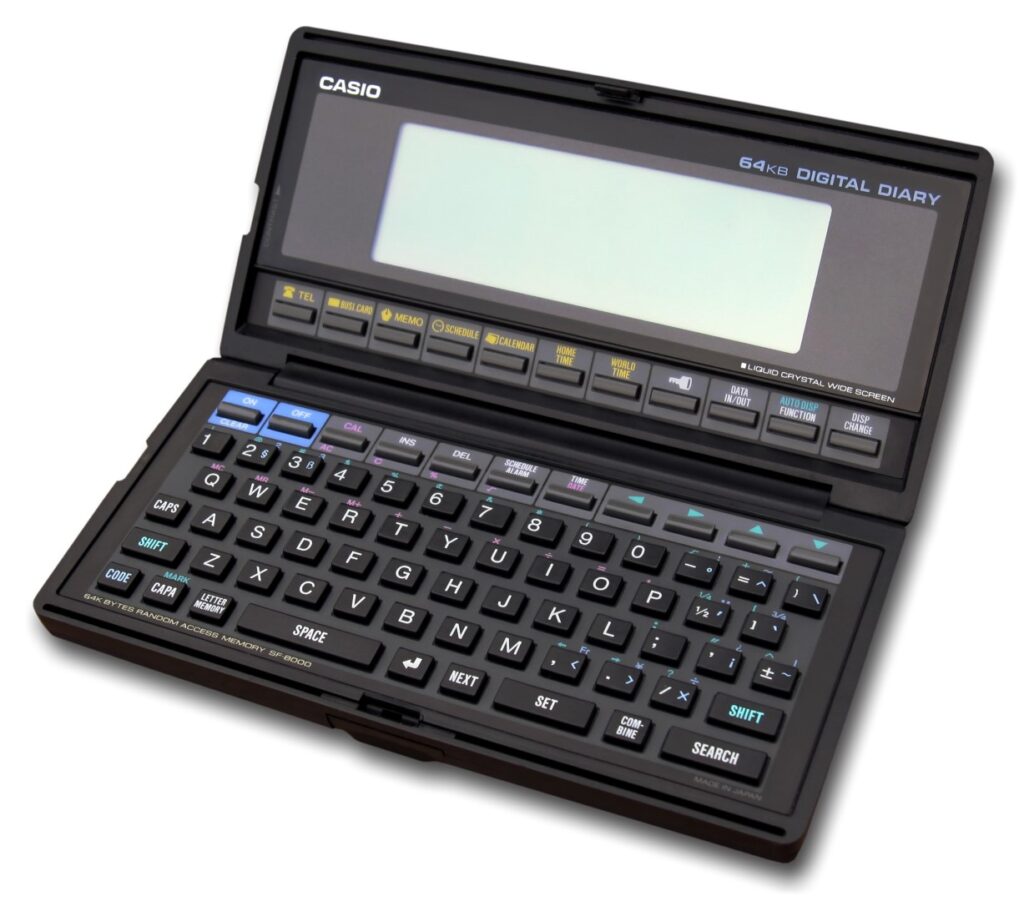
This approach works because the data is stored in static RAM (SRAM), which is built using CMOS logic. SRAM requires almost no energy to retain data—it only consumes power during state transitions. In contrast, dynamic RAM (DRAM), commonly used in computers, stores data in capacitors that must be periodically refreshed, requiring active power. The trade-off is density: DRAM enables the gigabytes of RAM in modern PCs, something impractical with SRAM due to cost and size.
Despite its lower density, SRAM is faster and has specific advantages that sometimes justify its cost. In the case of the F-202 tuner, the microcontroller’s “fully static” design allows it to use SRAM for programming storage. This technique is also used in PCs: BIOS settings are stored in CMOS RAM. The Real-Time Clock (RTC) chip, which requires constant power to keep time, also provides a few memory slots for BIOS configuration. This is why clearing the BIOS involves removing the CMOS battery for a few seconds—the loss of power resets the memory.
Finding the issue
I opened up the tuner, but I found no obvious battery. This is a good thing, as sometimes devices such as early PCs or the Commodore Amiga used a rechargeable battery that would eventually leak and destroy the PCB.
So I googled to see if i could find the manual and I was lucky enough to find it.
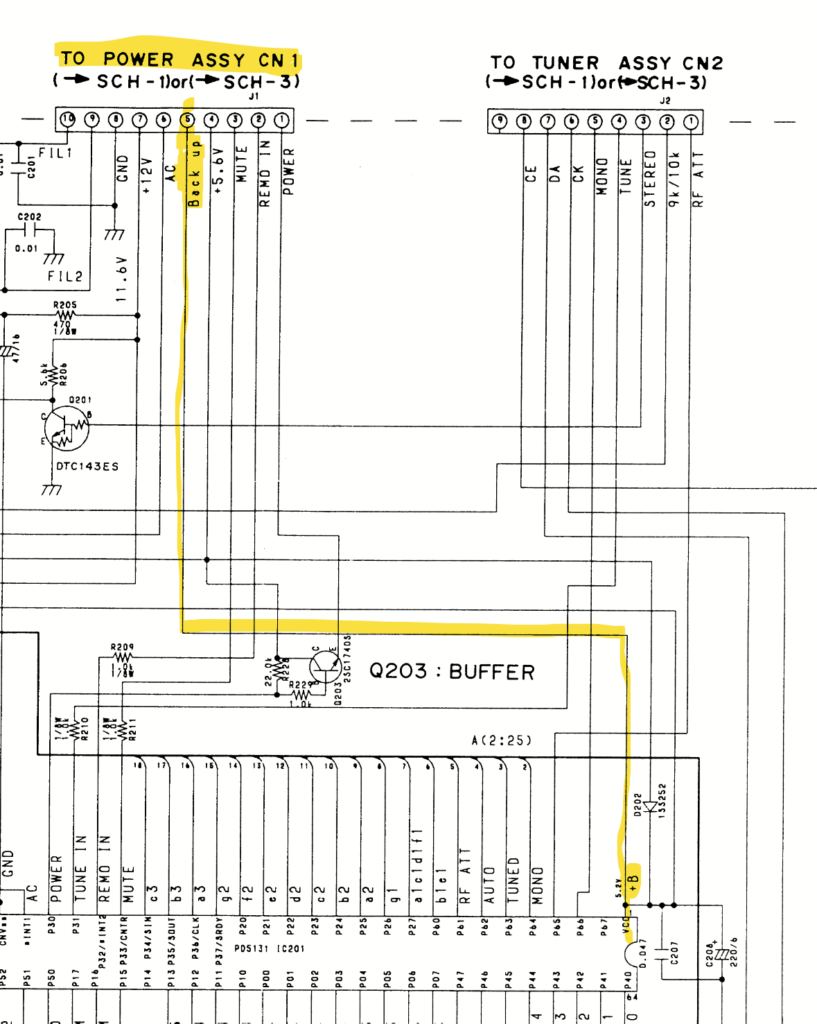
After a few minutes, I noticed that the microcontroller IC has a line called +B on the VCC pin. Hmm. Tracing it, we can see it ends up in a connector, in a pin labeled Back up. Ah hah! This is the backup voltage. Let’s trace it to the power board:
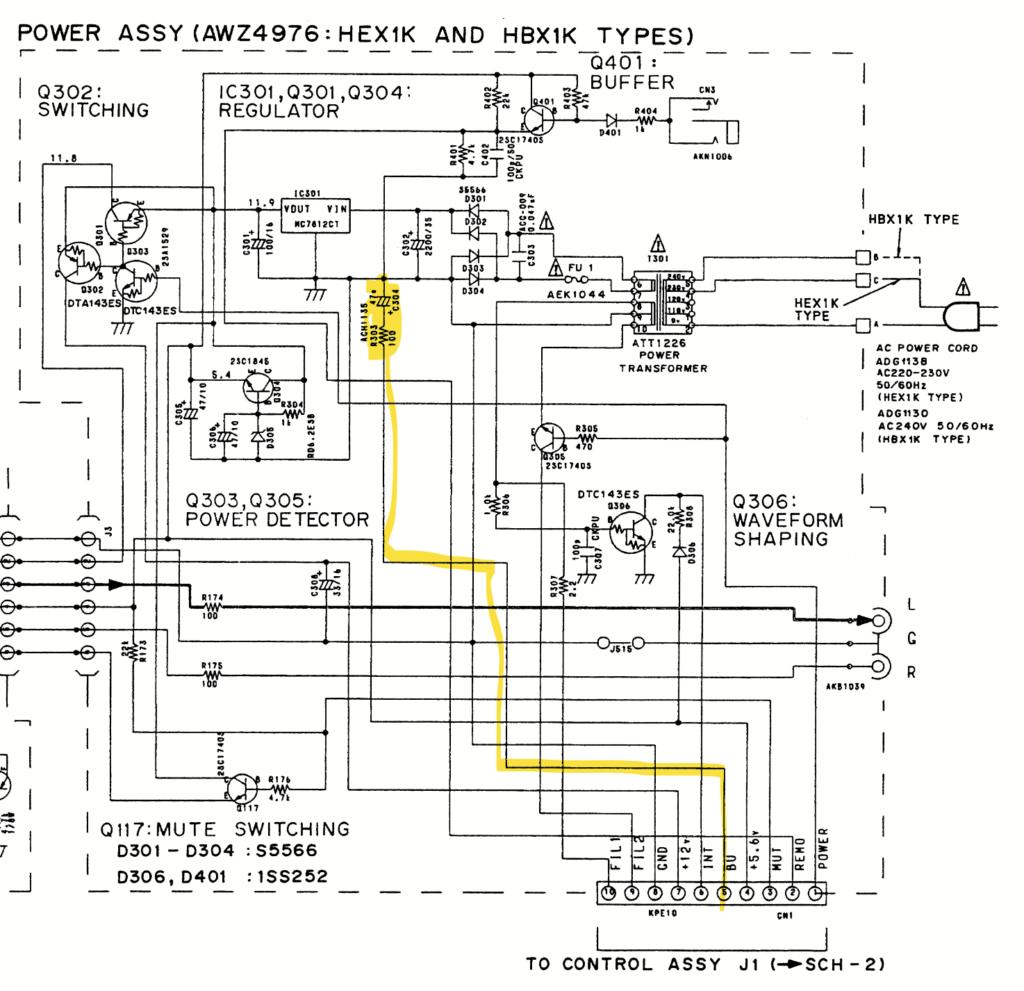
And there it is. We can see that the BU line ends in R303 and into C304. So it uses a capacitor for backup power instead of a battery. Let’s look for C304 then.
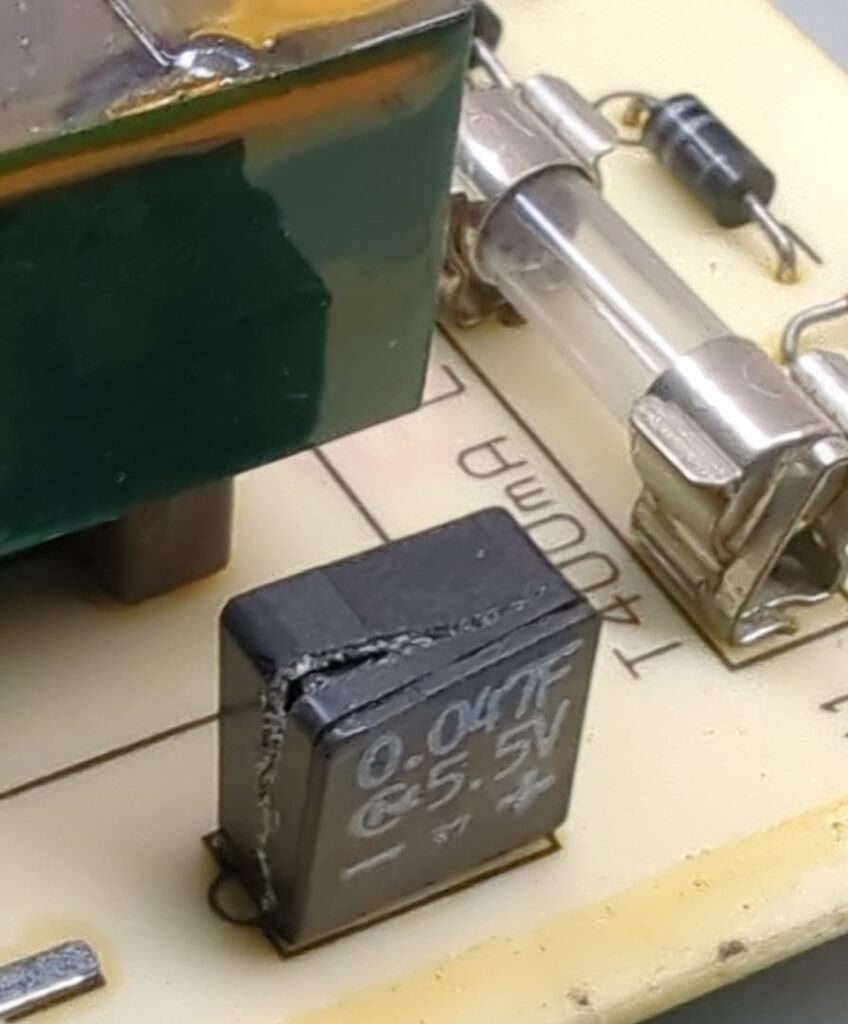
Yikes! That will certainly do it. No wonder it’s not working. Something bad happened to this capacitor. This is actually a supercapacitor. It’s 0.047 FARADS, not micro farads, not nano, not pico. Not even millis. It’s straight farads. In micro farads, this would be 47,000uF.
A primer on Supercapacitors
Supercapacitors, also known as ultracapacitors, are energy storage devices that bridge the gap between traditional capacitors and batteries. Unlike conventional capacitors, which store energy in an electric field between two plates separated by a dielectric, supercapacitors leverage a phenomenon called electric double-layer capacitance. This is achieved using highly porous materials like aerogel, which provide an enormous surface area for charge storage. Aerogel is an ultra-lightweight material composed of a gel where the liquid component is replaced with gas, resulting in a structure with extremely high porosity and very low density, ideal for maximizing energy density in supercapacitors.
The advantages of supercapacitors include their ability to deliver and absorb energy quickly, extremely high cycle life (recharging nearly indefinitely without degradation), and remarkable energy density compared to traditional capacitors. However, they are limited by their lower voltage ratings, requiring series arrangements for higher voltages, and they still lag behind batteries in terms of total energy storage capacity. Despite these limitations, their rapid charge/discharge capability and long life make them invaluable in applications like regenerative braking, memory backup, and stabilizing power supplies.
Anyways, this cap in particular was probably very advanced technology for the time. But times have changed and this is what we’re replacing it with:
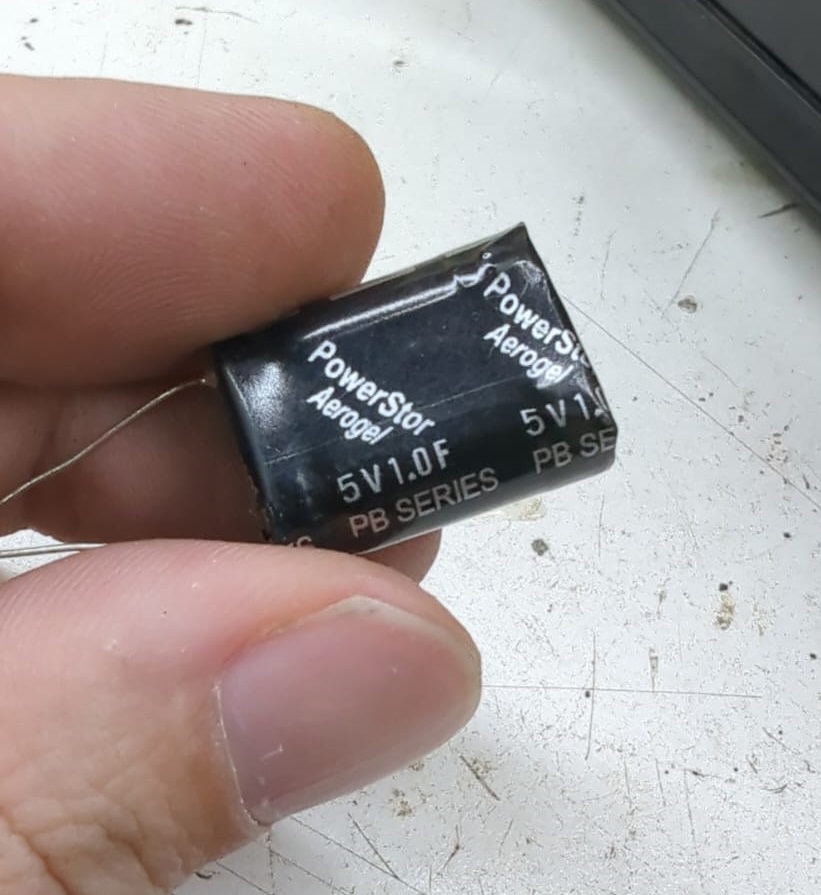
This is a more modern supercap. This one is 1 farad, or 1.000.000uF. Over 20 times larger than the original! It’s rated for 5.0V and the original was rated to 5.5V. I don’t have any 5.5V supercaps… so I can only hope this will work. I measured VCC at 4.9V so it should be fiiiiiine…..
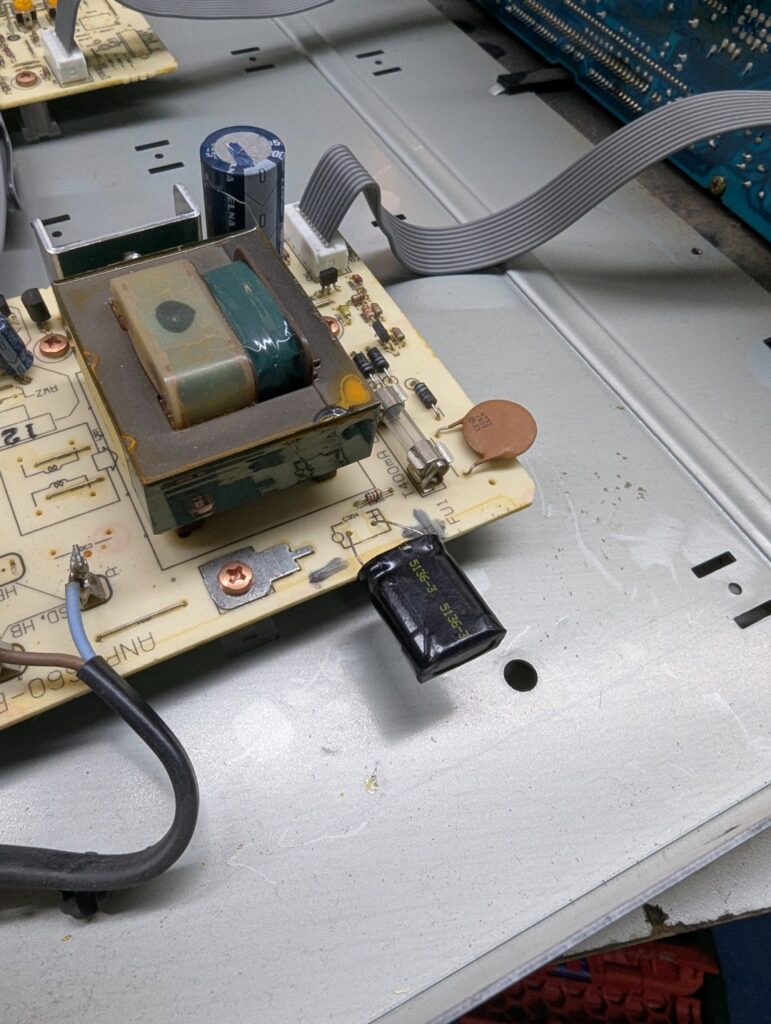
And here it is, soldered into its (hopefully) new home. Time will tell if it worked or not. But it has kept its memory for a few hours, at least.
Here’s the service manual in case you want to take a look
